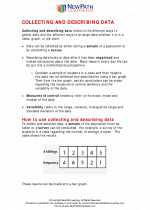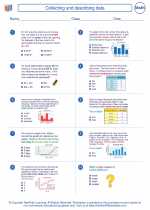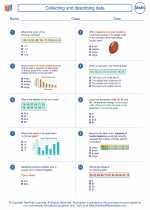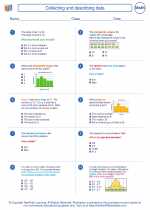Decimals
Introduction to Decimals
Decimals are a way of expressing numbers that are not whole. They are used to represent parts of a whole number. In a decimal, the digits to the right of the decimal point represent parts of one whole unit. The position of each digit to the right of the decimal point indicates its place value.
Place Value of Decimals
Each digit in a decimal has a specific place value, just like in whole numbers. The place values to the right of the decimal point are powers of 10, but they are negative powers. The place values to the right of the decimal point are tenths, hundredths, thousandths, and so on.
Reading and Writing Decimals
To read a decimal number, say the whole number part, then say "and", and read the digits to the right of the decimal point as if they were whole numbers. For example, the decimal 3.25 is read as "three and twenty-five hundredths". When writing decimals, the decimal point is placed between the whole number part and the fractional part.
Comparing and Ordering Decimals
To compare decimals, start from the left and compare the digits in each place value position. If the digits are the same, move to the next place value to the right. The decimal with the larger digit in the leftmost non-equal place value position is the greater number. To order decimals, compare and arrange them from least to greatest or greatest to least.
Decimal Operations
Decimals can be added, subtracted, multiplied, and divided just like whole numbers. When performing these operations, it's important to align the decimal points to ensure accuracy in the results. When multiplying and dividing, the number of decimal places in the result is equal to the total number of decimal places in the numbers being multiplied or divided.
Rounding Decimals
Rounding decimals involves determining which multiple of 10, 100, 1000, etc., a decimal is closest to. The digit to the right of the desired place value is used to determine whether the number should be rounded up or down.
Converting Decimals to Fractions and Percentages
Decimals can be converted to fractions by using the place value of the last digit. For example, 0.8 is equivalent to 8/10, which can be simplified to 4/5. Decimals can also be converted to percentages by multiplying by 100, or by moving the decimal point two places to the right.
Study Guide
Here are some key points to remember when working with decimals:
- Understand the place value of each digit in a decimal.
- Be able to read and write decimal numbers accurately.
- Know how to compare and order decimals.
- Practice performing basic operations with decimals.
- Learn how to round decimals to a specified place value.
- Be familiar with converting decimals to fractions and percentages.
Remember to practice these skills through exercises and problem-solving to reinforce your understanding of decimals.
[Decimals] Related Worksheets and Study Guides:
.◂Math Worksheets and Study Guides Eighth Grade. Collecting and describing data

 Worksheet/Answer key
Worksheet/Answer key
 Worksheet/Answer key
Worksheet/Answer key
 Worksheet/Answer key
Worksheet/Answer key
